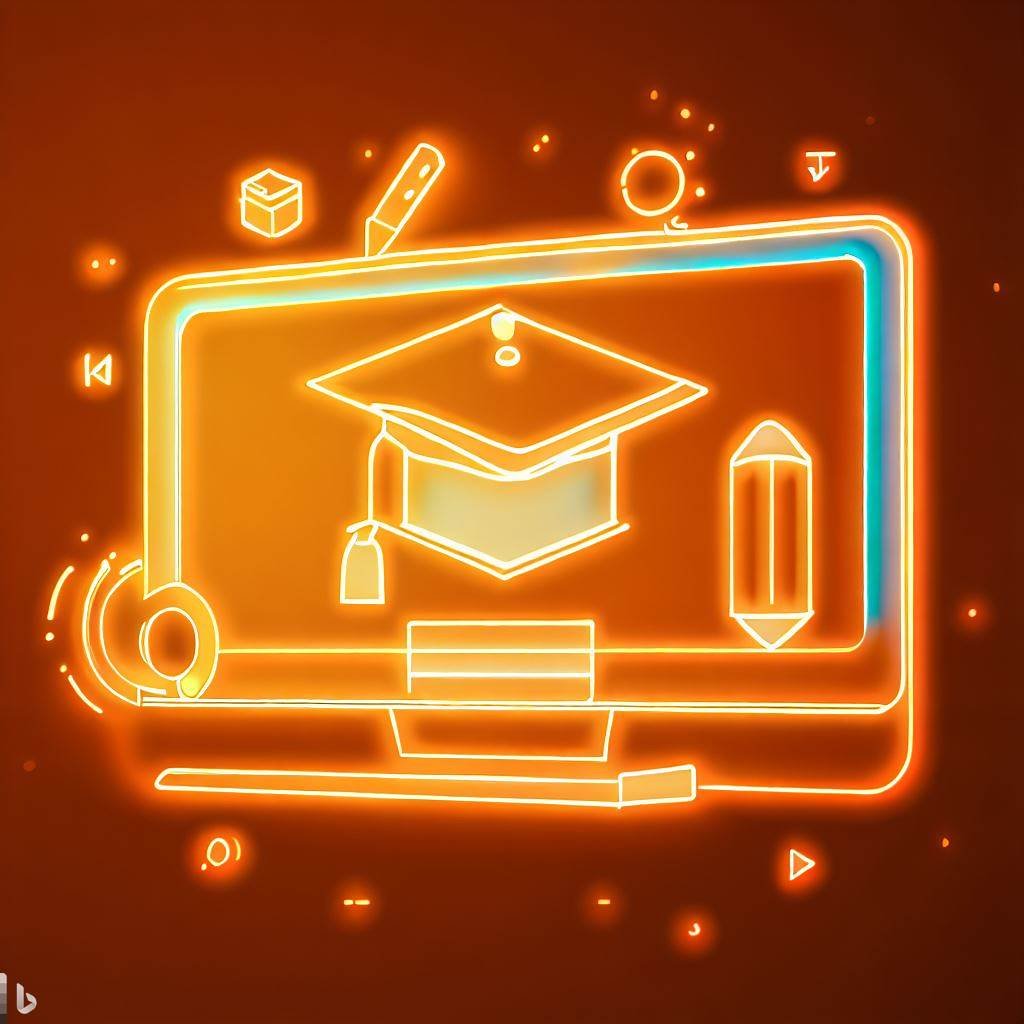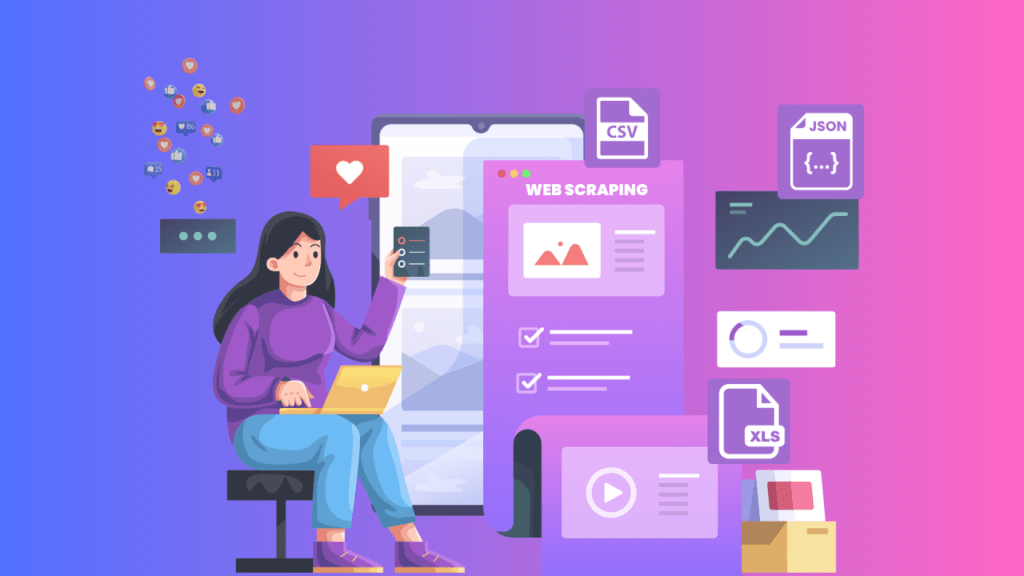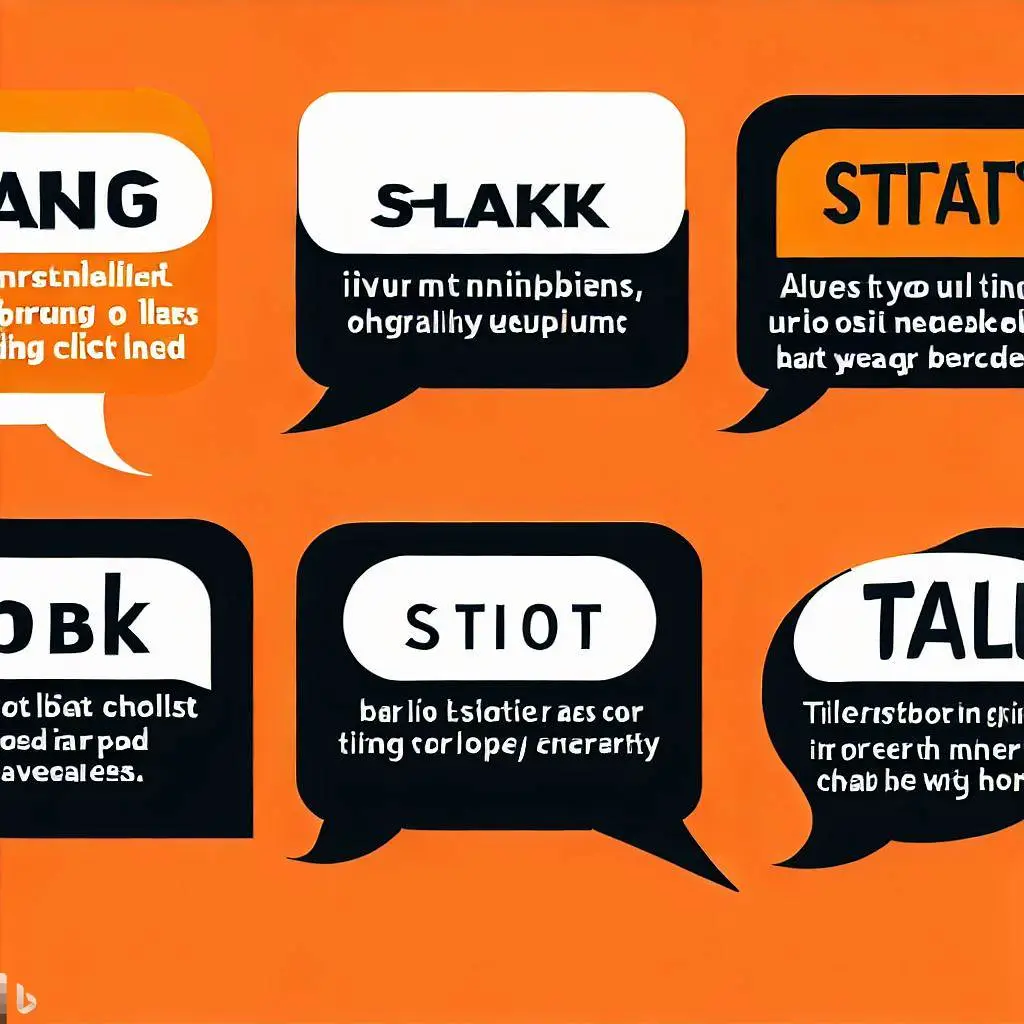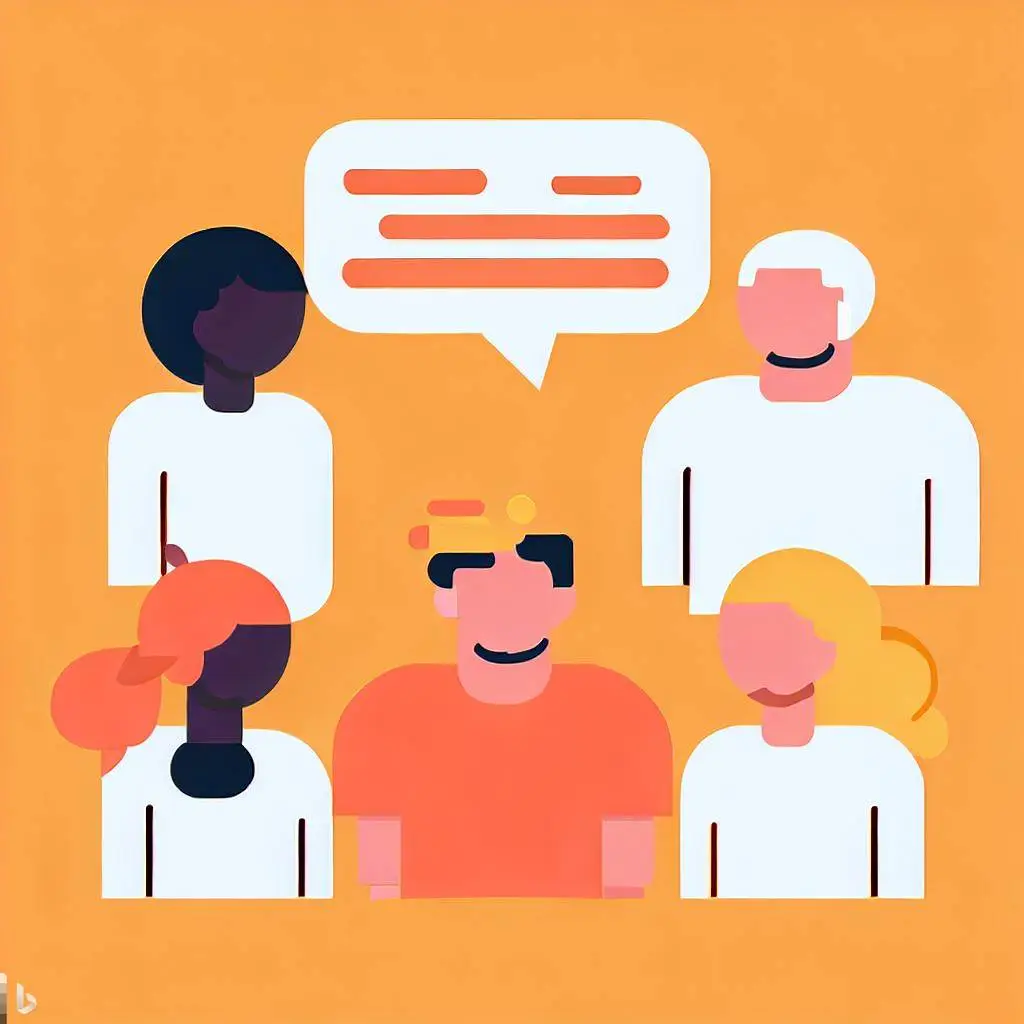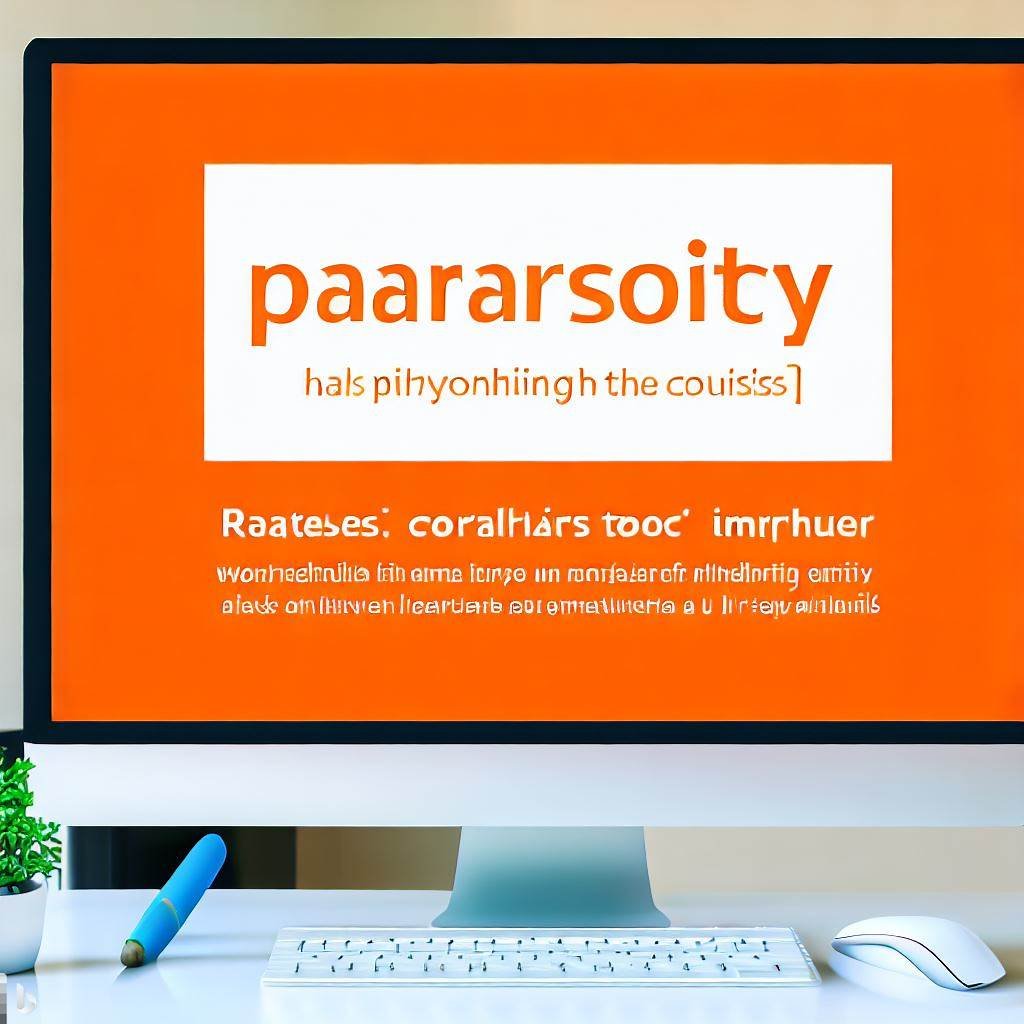The question: Can AI Replace Humans?
No. While AI has made significant advancements and can perform specific tasks with great efficiency, it cannot completely replace humans. However, the following discussion will provide a comprehensive exploration of the topic: “Can AI Replace Humans or Can Not?“ examining the capabilities and limitations of AI compared to human intelligence.
In today’s fast-paced technological landscape, the rise of artificial intelligence (AI) has sparked a contentious debate: Can AI replace humans? This article delves into the heart of this discussion, exploring the potential of AI replace Humans, its limitations, and the complex interplay between AI and human capabilities.
From industries to everyday tasks, we’ll uncover the ways in which AI is transforming our world and address the question of whether AI can truly replace the human touch.

The Promise of AI: Advancements and Capabilities
In this section, we explore the remarkable advancements and capabilities of AI, shedding light on its potential to outperform humans in certain tasks while complementing human abilities in others.
1. AI Replace Humans in Automation: Streamlining Processes and Efficiency
- AI has revolutionized industries by automating repetitive and mundane tasks, leading to increased efficiency and productivity.
- Machine learning algorithms and deep learning models enable AI systems to learn from vast amounts of data, making them adept at pattern recognition and predictive analysis.
2. AI Replace Humans in Complex Data Analysis: Unleashing the Power of Big Data
- AI algorithms can sift through massive datasets with unparalleled speed and accuracy, uncovering insights and patterns that may have eluded human analysts.
- With AI-driven data analytics, businesses can make data-driven decisions, identify trends, and gain a competitive edge.
3. AI Replace Humans in Problem-Solving: Tackling Challenges with Precision
- AI systems excel in problem-solving scenarios that require complex calculations, simulations, and optimization.
- In fields like healthcare and finance, AI algorithms assist in diagnosis, treatment planning, risk assessment, and portfolio management, augmenting human expertise.
The Limitations of AI: Human Ingenuity and Emotional Intelligence
While AI demonstrates impressive capabilities, it falls short in areas where human ingenuity, emotional intelligence, and subjective decision-making are paramount. This section highlights the limitations that prevent AI from completely replacing humans.
1. Creativity and Innovation: The Human Spark
- Human creativity, imagination, and the ability to think outside the box are fundamental drivers of innovation.
- AI, despite its ability to generate content or artwork, lacks the intrinsic motivation, intuition, and emotional depth that fuel truly groundbreaking ideas.
2. Complex Social Interactions: The Human Touch
- Human interaction involves complex nuances, empathy, and emotional intelligence that are difficult for AI systems to replicate.
- In fields like counseling, therapy, and customer service, the human touch remains essential in establishing trust, providing emotional support, and understanding unique individual needs.
3. Ethical and Moral Decision-Making: Balancing Values and Judgment
- Ethical dilemmas and moral decision-making require human values, intuition, and the ability to weigh multiple perspectives.
- While AI can assist in analyzing data and providing insights, the final decision-making responsibility lies with humans to consider the ethical implications and broader societal impact.
The Synergy of Humans and AI: Collaboration and Coexistence
Rather than framing AI as a direct replacement for humans, it is crucial to recognize the potential for collaboration and coexistence. This section explores the synergistic relationship between humans and AI, where each brings unique strengths to the table.
1. Augmented Intelligence: Humans and AI as Partners
- The concept of augmented intelligence emphasizes the collaboration between humans and AI, leveraging the strengths of both to achieve optimal outcomes.
- By combining human creativity, critical thinking, and emotional intelligence with AI’s data processing capabilities, we unlock new possibilities.
2. Enhancing Human Capabilities: Expanding Horizons
- AI can enhance human capabilities by providing valuable insights, automating routine tasks, and augmenting decision-making processes.
- By leveraging AI tools and technologies, individuals and businesses can amplify their productivity, expand their knowledge base, and focus on higher-level tasks.
3. Reskilling and Adaptation: Embracing the AI Revolution
- Rather than fearing the potential displacement of jobs, humans can adapt and reskill to thrive in an AI-driven world.
- The emergence of AI opens up new opportunities for learning and development, encouraging individuals to acquire skills that complement AI technology.
If you’re interested in exploring the impact of artificial intelligence on the replacement of human talent in higher education, specifically in the context of the pandemic, we have a compelling case study about Can AI Replace Humans available for download.
Discover how AI is reshaping the educational landscape and gain insights into the challenges and opportunities it presents. Access the PDF to delve into this thought-provoking study and stay informed in the ever-evolving field of AI in education.
Free Case studies: (PDF) Artificial Intelligence and Replacement of Human Talent: Case Study of Higher Education in Times of Pandemic
Researchgate.net
Humans vs AI: Exploring the Clash of Abilities in the Age of Artificial Intelligence
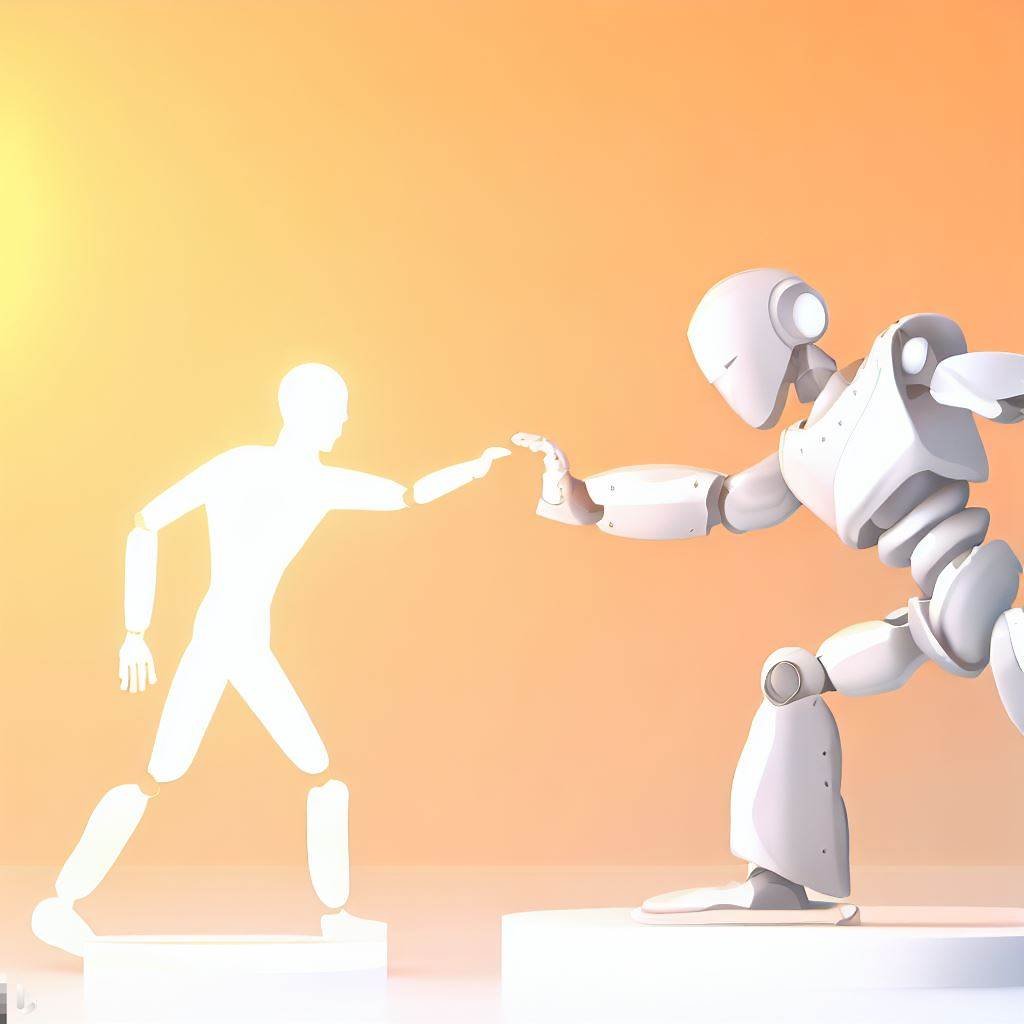
In an era dominated by technological advancements, the comparison between humans and AI has become a topic of great interest. This article delves into the contrasting strengths and weaknesses of humans and AI, examining their unique abilities, decision-making processes, creativity, adaptability, and more. Gain insights into how these two entities coexist and shape the future of various industries and societal dynamics.
| Human | AI | |
|---|---|---|
| Decision-Making | Draws from experience, emotions, and intuition | Analyzes vast amounts of data and algorithms |
| Learning | Requires time and practice | Learns from data and improves over time |
| Creativity | Displays imagination and originality | Can generate creative outputs based on patterns and data |
| Physical Labor | Limited by physical capabilities | No physical limitations, can perform repetitive tasks |
| Adaptability | Can adapt to new situations and learn from them | Requires updates and reprogramming for new tasks |
| Emotional Intelligence | Displays empathy and emotional understanding | Lacks emotions and empathy |
| Ethics | Has a moral compass and can make ethical judgments | Lacks moral reasoning and relies on programmed rules |
| Intuition | Relies on gut feelings and instincts | Makes decisions based on data analysis |
| Communication | Uses language and non-verbal cues for effective communication | Relies on programmed algorithms for communication |
| Innovation | Can think outside the box and come up with novel ideas | Improves existing processes based on data and patterns |
Please note that this Artificial intelligence vs human table provides a general comparison between humans and AI and may not cover all aspects comprehensively. The capabilities of AI continue to evolve, and its interaction with human abilities can vary depending on the specific context and application.
10 reason that AI can replace humans
While it is important to note that AI has its limitations and may not completely replace humans in all domains, there are several reasons why AI Replace Humans and has the potential to replace certain human tasks and roles. Here are ten reasons AI Replace Humans:
- Speed and Efficiency: AI systems scan process information and perform tasks at incredible speed, surpassing human capabilities in terms of processing power and efficiency.
- Repetitive and Mundane Tasks: AI excels at automating repetitive and mundane tasks that do not require complex decision-making or creativity, allowing humans to focus on more strategic and value-added activities.
- Data Processing and Analysis: AI algorithms can analyze vast amounts of data and extract valuable insights at a scale and speed that humans simply cannot match, enabling better decision-making and problem-solving.
- Pattern Recognition: AI Replace Humans with the systems can quickly identify patterns and correlations within large datasets, making them well-suited for tasks such as image and speech recognition, fraud detection, and predictive analytics.
- Precision and Accuracy: AI technologies can perform tasks with a high degree of precision and accuracy, reducing errors and improving overall quality in areas such as manufacturing, healthcare diagnostics, and financial analysis.
- AI Replace Humans Scalability: AI can scale effortlessly to handle massive workloads without experiencing fatigue or diminishing performance, making it ideal for handling large-scale operations and complex calculations.
- AI Replace Humans 24/7 Availability: AI systems can operate continuously, allowing businesses to provide round-the-clock services and support without the need for human involvement.
- Safety in Hazardous Environments: AI-enabled robots and drones can be deployed in hazardous environments such as disaster zones, nuclear facilities, or deep-sea exploration, minimizing the risks to human lives.
- Cost Savings: Implementing AI solutions can lead to cost savings in labor, as AI systems can replace human workers in certain tasks, leading to increased operational efficiency and reduced expenses.
- Innovation and Discovery: AI can augment human creativity by assisting in generating new ideas, exploring possibilities, and discovering insights that humans may not have considered on their own, driving innovation in various fields.
While AI’s potential to replace humans in certain areas is evident, it is crucial to strike a balance between AI and human collaboration to leverage the unique strengths of both. Recognizing the complementary nature of AI and human intelligence can lead to a future where humans and AI work together harmoniously, ultimately driving progress and innovation.
10 Reasons AI can NOT replace humans:
Why is AI not replacing humans? Artificial intelligence cannot replace human intelligence. While AI has made significant advancements, there are several reasons why it is unlikely to completely replace humans in many domains. Here are ten reasons why AI cannot replace humans:
- Complex Decision-making: AI lacks the ability to replicate human intuition, creativity, and emotional intelligence, which are crucial for complex decision-making that involves ethical considerations, context understanding, and subjective judgment.
- Adaptability and Learning: Humans possess the remarkable ability to adapt to new situations, learn from experiences, and acquire new skills, while AI systems are limited to the data they have been trained on and may struggle to adapt to unfamiliar or changing circumstances.
- Social Interaction and Empathy: Human interactions involve complex emotions, empathy, and nuanced communication that are challenging for AI systems to replicate authentically, limiting their effectiveness in roles that require interpersonal relationships.
- Ethics and Morality: AI lacks a sense of ethics and morality, making it incapable of making moral judgments or understanding the ethical implications of its actions. Human judgment and values are essential for making ethical decisions.
- Contextual Understanding: AI often struggles to grasp the context, background knowledge, and common sense reasoning that humans possess naturally. This limitation can hinder AI’s ability to interpret ambiguous situations accurately.
- Creativity and Innovation: While AI can assist in creative tasks such as generating ideas or patterns based on existing data, it currently lacks the imaginative and visionary thinking that humans possess, limiting its ability to innovate.
- Physical Dexterity and Mobility: AI may excel in cognitive tasks, but it is unable to replicate the physical dexterity, mobility, and sensory perception of humans, making it challenging to perform tasks that require manual manipulation or intricate movements.
- Intuition and Gut Feeling: Humans often rely on intuition and gut feelings based on their experience and expertise, which is challenging for AI to replicate since it operates based on algorithms and data-driven decision-making.
10 Things AI Replace Humans in Today’s World
AI Can Replace Humans in many cases. In the age of technological advancements, artificial intelligence (AI) has emerged as a powerful force that is reshaping various aspects of our lives. From automation to complex decision-making, AI has shown remarkable potential in surpassing human capabilities. In this article, we will explore the ten areas where AI has the potential to replace human involvement, revolutionizing industries and transforming our society.
1. AI Replace Humans in Customer Service and Support
- AI-powered chatbots and virtual assistants have become increasingly sophisticated, offering quick and accurate responses to customer queries.
- These AI systems can handle large volumes of customer interactions, providing round-the-clock support and personalized assistance.
- Read more about AI help in Customer Service and Support at: » 10 Fantastic Ai chatbot online
2. AI Replace Humans in Data Analysis and Insights
- AI algorithms can process vast amounts of data, extracting patterns and trends with exceptional speed and accuracy.
- By automating data analysis, AI eliminates human bias and errors, enabling businesses to make data-driven decisions more effectively.
3. AI Replace Humans in Manufacturing and Production
- AI-powered robots and machines can perform repetitive and precise tasks in manufacturing, improving efficiency and reducing costs.
- These machines are capable of learning and adapting, making them valuable assets in production lines.
4. AI Replace Humans in Transportation and Logistics
- Autonomous vehicles guided by AI systems have the potential to replace human drivers, reducing accidents and improving transportation efficiency.
- AI algorithms can optimize logistics operations, including route planning, inventory management, and delivery scheduling.
5. AI Replace Humans in Language Translation
- AI language translation tools are becoming increasingly sophisticated, enabling real-time translation of text and speech across different languages.
- These AI systems can bridge communication gaps, facilitating global interactions and breaking down language barriers.
6. AI Replace Humans in Medical Diagnosis and Imaging
- AI algorithms can analyze medical data and images with high accuracy, aiding in the diagnosis of diseases and providing treatment recommendations.
- AI-powered imaging systems can detect abnormalities and assist healthcare professionals in identifying medical conditions.
7. AI Replace Humans in Financial Analysis and Trading
- AI Replace Humans in many algorithms can analyze financial data, predict market trends, and make investment recommendations.
- Automated trading systems driven by AI can execute trades with speed and precision, outperforming human traders in some cases.
- Read more about AI roles in Finance: » 10 Must-Have AI Tools for Investors and Financial Professionals
8. AI Replace Humans in Creative Content Generation
- AI Replace Humans Jobs with AI-powered tools can generate content such as articles, reports, and even artwork with remarkable fluency and creativity.
- While not replacing human creativity, AI complements and assists in content creation, saving time and enhancing productivity.
- Read more about AI content generation: » How to Write Blog Faster Using AI
9. AI Replace Humans in Personal Assistants
- AI-powered virtual personal assistants, such as Siri and Alexa, can perform tasks like scheduling appointments, setting reminders, and providing personalized recommendations.
- These assistants can learn user preferences and adapt to individual needs, offering convenience and efficiency.
NoowAI is an exceptional AI assistant that possesses remarkable capabilities and is available to users at no cost. With its advanced algorithms and extensive knowledge base, NoowAI can effortlessly handle a wide range of tasks, making it an invaluable tool for individuals seeking reliable and efficient AI-powered assistance.
NoowAI – Ask me anything.!
10. AI Replace Humans in Hazardous and Dangerous Jobs
- AI-powered robots can be deployed in hazardous environments, such as nuclear power plants or disaster zones, where human safety is at risk.
- These robots AI replace humans and can perform dangerous tasks with precision and without endangering human lives.
Embracing the AI Age: How Humans Navigate the Challenges and Opportunities of AI.
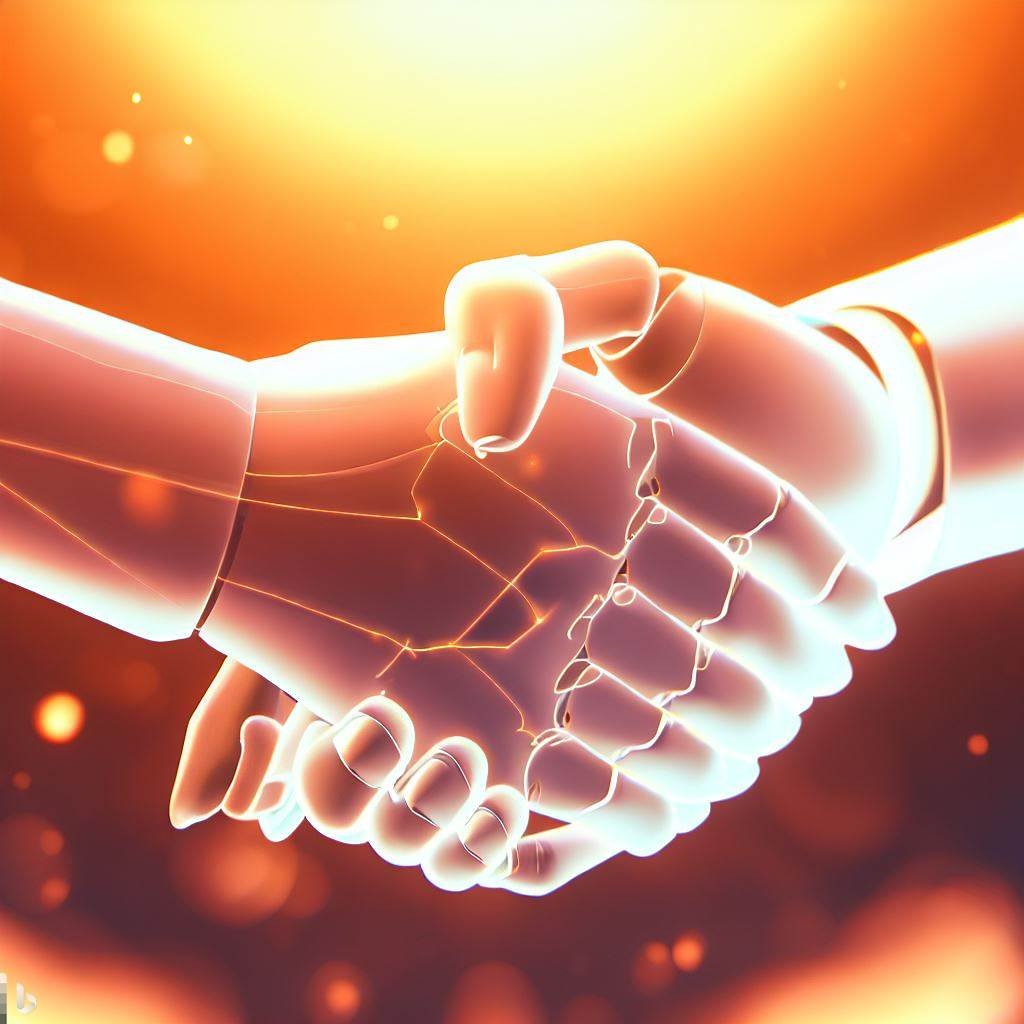
In today’s age of AI, humans are facing the rapid advancements and integration of artificial intelligence in various aspects of life. While AI brings about numerous benefits and opportunities, it also presents unique challenges and changes that humans need to navigate. Here are some ways in which humans are facing the AI age:
- Adaptation: Humans are adapting to the changing landscape by acquiring new skills and knowledge to work alongside AI technologies. This involves upskilling, reskilling, and embracing lifelong learning to stay relevant in a technology-driven world.
- Collaboration: Rather than perceiving AI as a threat, humans are recognizing the importance of collaboration between humans and AI systems. They are finding ways to leverage AI’s capabilities to augment their own skills and enhance productivity in various domains.
- Ethical Considerations: As AI becomes more prevalent, humans are grappling with ethical questions and concerns surrounding privacy, bias, accountability, and transparency. They are actively engaging in discussions and debates to ensure responsible development and deployment of AI technologies.
- Job Market Changes: The rise of AI has brought about shifts in the job market, with some tasks being automated and new roles emerging. Humans are adapting to these changes by exploring new career paths, entrepreneurship, and embracing creativity and critical thinking, which are uniquely human qualities.
- Education and Research: Recognizing the importance of understanding AI, humans are increasingly engaging in education and research related to AI. They are seeking to deepen their knowledge of AI principles, algorithms, and ethical implications to make informed decisions and contribute to the development of AI technologies.
- Impact Assessment: Humans are actively assessing the societal impact of AI and working towards mitigating potential risks. This involves analyzing the effects of AI on various sectors, such as healthcare, transportation, and education, and devising strategies to ensure equitable access, fairness, and social benefit.
- Policy and Regulation: Policymakers and experts are shaping the AI landscape by developing frameworks, guidelines, and regulations to govern the responsible use of AI. Humans are participating in these discussions, advocating for policies that protect individual rights, promote transparency, and foster innovation.
AI Replace Humans is a challenging, humans are facing the AI age by adapting, collaborating, addressing ethical considerations, navigating changes in the job market, engaging in education and research, assessing impacts, and shaping policies. By embracing the potential of AI while upholding human values, humans are striving to create a harmonious coexistence with artificial intelligence.
FAQs: Addressing Common Concerns
Q: Will AI completely replace humans?
- A: While AI replace humans in many case and has the potential to automate certain tasks, it is unlikely to completely replace humans in most job roles. Instead, it is more feasible to envision a future where humans and AI collaborate, with humans focusing on tasks that require creativity, critical thinking, and emotional intelligence.
- Read more about The Future of AI: » Predictions and Trends for the Next Decade
Q: How can AI contribute to job creation?
- A: While some jobs may be automated, the rise of AI also creates new job opportunities. The development, implementation, and maintenance of AI systems require skilled professionals. Additionally, AI can create entirely new industries and transform existing ones, leading to job growth.
Q: Will AI make humans obsolete?
- A: No, AI will not make humans obsolete. Instead, it will augment human capabilities, making us more efficient, productive, and innovative. The key lies in understanding how to harness the power of AI to amplify human potential. AI replace Humans in many case, but can not make humans obsolete.
Q: What are the limitations of AI in replacing humans?
- A: AI currently lacks human-like common sense, intuition, and empathy, which are essential in various fields such as caregiving, therapy, and creative arts.
Q: Will AI lead to job losses?
- A: AI has the potential to automate certain tasks, leading to job displacement in some industries. However, it also creates new job opportunities, as humans can focus on more complex and creative roles. There are many jobs ai cant replace.
- If you consider on jobs will ai replace, please read this report on Weforum: »The Future of Job Reports
Q: Will ai replace human jobs and Will ai replace humans essay?
- A: AI has the potential to automate certain jobs and tasks, but it is unlikely to completely replace humans in all aspects. The impact of AI on the workforce is complex and multifaceted, and its role should be seen as augmenting human capabilities rather than replacing humans entirely. If you consider on Can artificial intelligence replace human intelligence pros and cons, please read our above reasoning.
Can AI exist without humans?
- No, AI cannot exist without humans. While AI systems can operate independently and perform tasks with minimal human intervention, they are developed, programmed, and maintained by humans. The design, training, and supervision of AI systems require human involvement, and they rely on human input, data, and oversight to function effectively. Ultimately, AI systems are created to augment human capabilities, enhance productivity, and assist in decision-making rather than replace the human presence altogether.
Why is AI not replacing humans?
- AI is not replacing humans for several reasons:
- Complexity of Human Intelligence: Human intelligence encompasses a wide range of complex abilities such as creativity, critical thinking, emotional intelligence, and social interaction. AI systems, while powerful in certain domains, struggle to replicate these nuanced human capabilities.
- Contextual Understanding: Humans possess a deep understanding of context, which allows them to navigate ambiguous situations, interpret complex information, and make judgment calls based on intuition and experience. AI, on the other hand, relies on predefined rules and data patterns, making it less adaptable to dynamic or unfamiliar situations.
- Ethical and Moral Decision-making: Many decisions in various domains involve ethical considerations, moral judgments, and subjective values. AI lacks the inherent moral reasoning and ethical understanding that humans possess, making it challenging for AI to make complex ethical decisions.
- Human-Centric Skills: Certain occupations require interpersonal skills, empathy, creativity, and collaboration, which are uniquely human attributes. These skills are essential in fields like healthcare, counseling, artistic endeavors, and leadership roles, where human interaction and emotional connection are crucial.
- Unforeseen Situations and Novelty: AI systems excel at processing vast amounts of data and recognizing patterns, but they struggle with unfamiliar or unexpected situations. Humans have the ability to adapt, learn from new experiences, and solve problems creatively, which makes them better suited for handling unanticipated challenges.
- Social and Cultural Factors: AI adoption and integration into society face various social, cultural, and regulatory challenges. Concerns regarding job displacement, privacy, ethics, and accountability impede the widespread replacement of humans by AI.
In summary, while AI replace humans and continues to advance and automate certain tasks, the complexity of human intelligence, contextual understanding
Will AI not replace you?
- While AI replace humans and has advanced capabilities and can automate certain tasks, there are unique qualities and skills that make humans invaluable, such as creativity, emotional intelligence, critical thinking, and the ability to connect on a deeper level. AI may augment and enhance our abilities, but it cannot fully replicate the essence of being human.
So, Will AI Replace Humans?
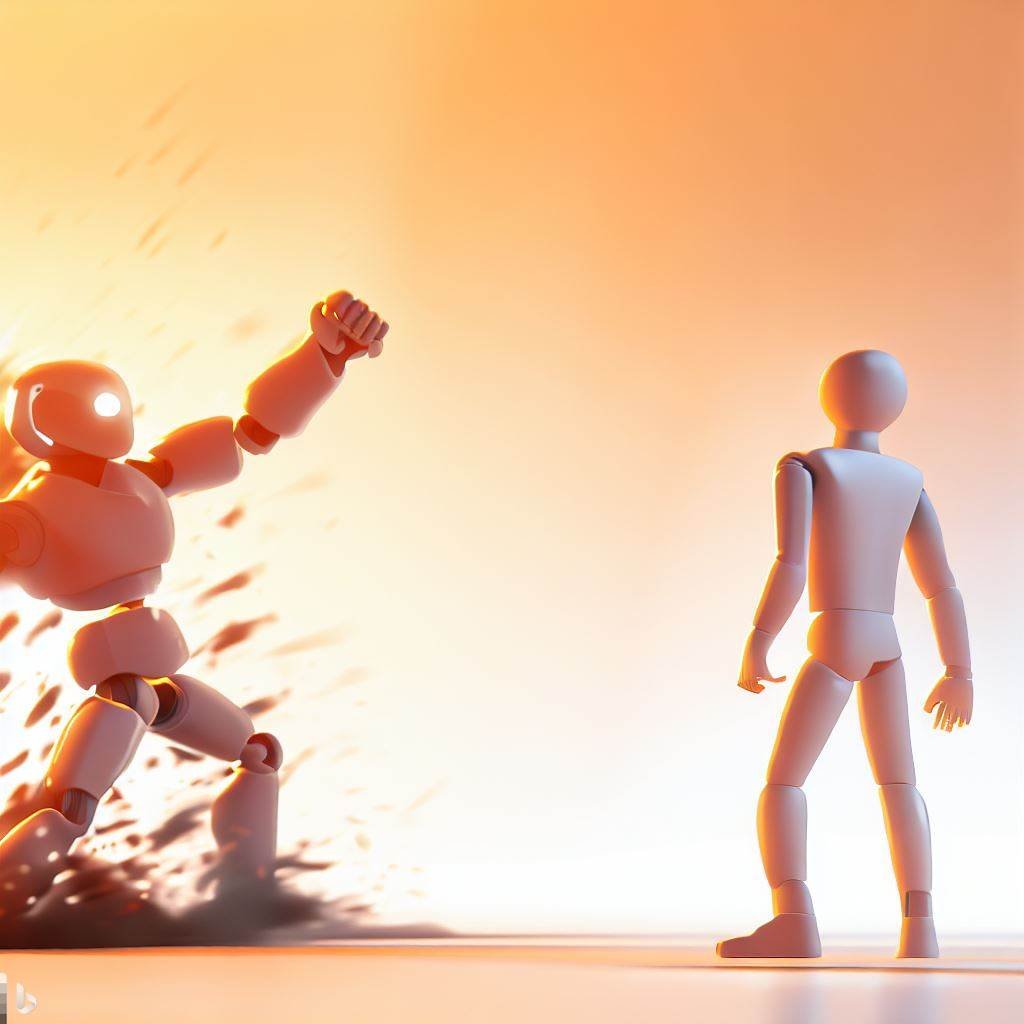
In conclusion, the question of whether AI can replace humans is multifaceted. While AI showcases impressive capabilities, it lacks the depth of human creativity, emotional intelligence, and ethical decision-making. However, by recognizing the synergistic relationship between humans and AI, we can harness the transformative power of AI while embracing our unique human qualities.
The future lies in collaboration, adaptation, and leveraging AI as a tool to enhance our capabilities and drive innovation. So, rather than fearing the rise of AI, let us embrace it as a catalyst for progress and a means to shape a more advanced and interconnected world.
